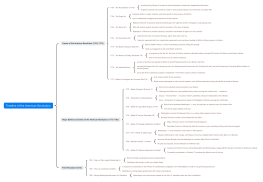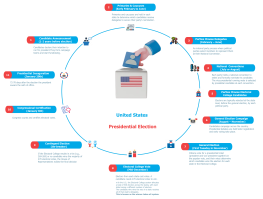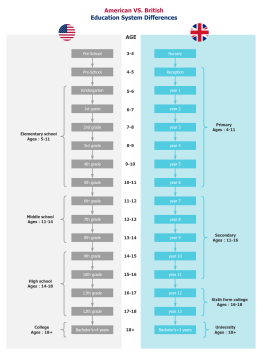
The American Political System and Presidential Elections: Problems and Strengths
3 Report
This mind map outlines the complexities of 'The American Political System and Presidential Elections: Problems and Strengths.' It delves into the structure of the U.S. political system, highlighting the separation of powers among the executive, legislative, and judicial branches, and the role of federalism. It examines the presidential election process, including primaries, conventions, and the Electoral College, while addressing challenges like voter suppression and foreign interference. The map also explores strengths such as democratic foundations, a stable two-party system, and voter engagement, alongside potential reforms to enhance fairness and trust in the electoral process.
Related Recommendations
Other works by the author
Outline/Content
See more
Structure of the American Political System
Separation of Powers
Executive Branch - Led by the President, responsible for enforcing laws.
Legislative Branch - Congress (House of Representatives and Senate) creates laws.
Judicial Branch - Supreme Court and lower courts interpret laws.
Federalism
Division of power between federal and state governments.
Role of state governments in elections and policy-making.
Political Parties
Two-party system dominated by Democrats and Republicans.
Role of third parties and independents in elections.
Presidential Election Process
Primary Elections and Caucuses
State-by-state process to select party nominees.
Differences between primaries and caucuses.
Party Conventions
Official nomination of candidates.
Platform announcements and party unity efforts.
General Election
Nationwide campaign leading up to Election Day.
Debates, advertisements, and voter outreach efforts.
Electoral College System
How the Electoral College determines the winner.
Criticisms and calls for reform (e.g., National Popular Vote movement).
Inauguration and Transfer of Power
Swearing-in ceremony and transition process.
Importance of a peaceful transfer of power.
Strengths of the American Political System and Elections
Democratic Foundations
Constitutional checks and balances prevent authoritarian rule.
Regular elections allow public participation in government.
Stable Two-Party System
Provides clear choices for voters and encourages political stability.
Electoral College Advantages
Prevents large states from dominating elections.
Encourages candidates to campaign in diverse regions.
Legal Framework and Transparency
Strong legal system to resolve election disputes.
Open and transparent election monitoring by media and watchdogs.
Voter Engagement
Freedom of speech allows robust political debate and activism.
Growing voter participation through early voting and mail-in ballots.
Problems and Challenges in the Political System and Elections
Electoral College Criticisms
Can result in a president winning without the popular vote.
Gives disproportionate influence to swing states.
Voter Suppression and Accessibility Issues
Strict voter ID laws and registration difficulties.
Gerrymandering reducing fair representation.
Limited voting access for marginalized groups.
Money in Politics
Influence of corporate and Super PAC funding in elections.
Concerns over campaign finance transparency.
Partisan Polarization
Deepening political divisions between parties.
Challenges in bipartisan cooperation on major issues.
Foreign Interference and Misinformation
Cybersecurity threats to election integrity.
Spread of false information through social media and propaganda.
Delayed Election Results and Legal Challenges
Close elections leading to recounts and court disputes.
Potential for political instability and contested results.
Potential Reforms and Solutions
Abolishing or Reforming the Electoral College
National Popular Vote movement as an alternative.
Improving Voting Accessibility
Expanding early voting and mail-in ballots.
Automatic voter registration to increase participation.
Campaign Finance Reform
Stronger regulations on political donations.
Public funding for elections to reduce corporate influence.
Addressing Partisan Polarization
Encouraging bipartisan cooperation and compromise.
Strengthening civic education to foster informed debate.
Strengthening Election Security
Increased cybersecurity measures to prevent hacking.
Combatting misinformation through fact-checking and media literacy.
Conclusion
The American political system and elections have both strengths and weaknesses.
While democracy remains strong, reforms are needed to address ongoing challenges.
Public engagement and policy changes can improve fairness and trust in the electoral process.

0 Comments
Next Page







